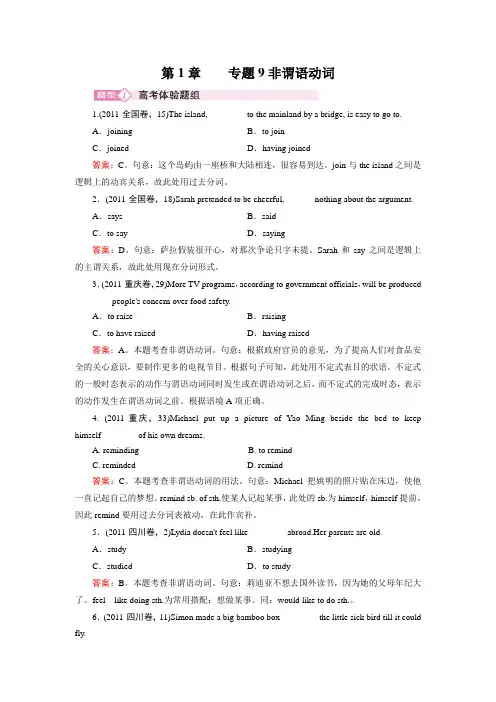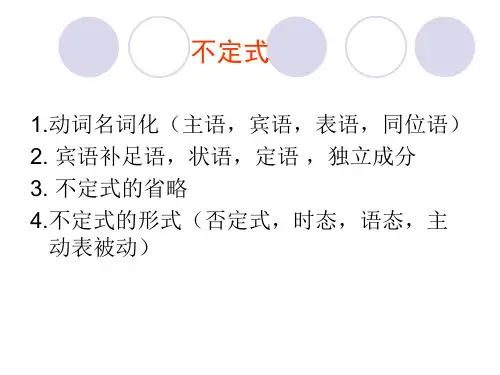高三英语二轮复习课件1-9非谓语动词
- 格式:ppt
- 大小:751.50 KB
- 文档页数:46




第1章专题9非谓语动词1.(2011·全国卷,15)The island, ________ to the mainland by a bridge, is easy to go to.A.joining B.to joinC.joined D.having joined答案:C。
句意:这个岛屿由一座桥和大陆相连,很容易到达。
join与the island之间是逻辑上的动宾关系,故此处用过去分词。
2.(2011·全国卷,18)Sarah pretended to be cheerful, ______ nothing about the argument.A.says B.saidC.to say D.saying答案:D。
句意:萨拉假装很开心,对那次争论只字未提。
Sarah和say之间是逻辑上的主谓关系,故此处用现在分词形式。
3.(2011·重庆卷,29)More TV programs,according to government officials,will be produced ________ people's concern over food safety.A.to raise B.raisingC.to have raised D.having raised答案:A。
本题考查非谓语动词。
句意:根据政府官员的意见,为了提高人们对食品安全的关心意识,要制作更多的电视节目。
根据句子可知,此处用不定式表目的状语。
不定式的一般时态表示的动作与谓语动词同时发生或在谓语动词之后,而不定式的完成时态,表示的动作发生在谓语动词之前。
根据语境A项正确。
4. (2011·重庆,33)Michael put up a picture of Yao Ming beside the bed to keep himself________ of his own dreams.A. remindingB. to remindC. remindedD. remind答案:C。


